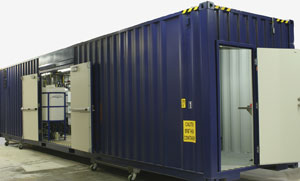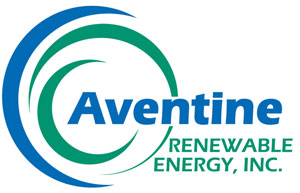August 2007
 View Full Print Edition
View Full Print EditionBusiness Briefs
Columns
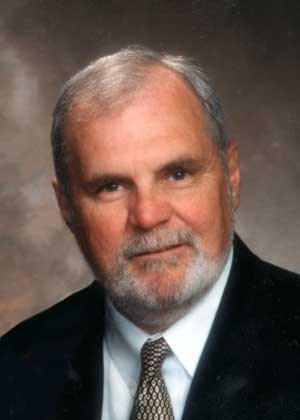
The Way I See It
By Mike Bryan

A View From the Hill
By Ashley Schlag
Intellectual Property and Ethanol: Seven Steps for Success
By Camille Urban
Editor's Note
By Tom Bryan
EERC Update
By Chris J. Zygarlicke

Editor's Note
By Tom Bryan

NBB In Sight
By Donnell Rehagen, NBB Chief Operating Officer
Featured
Getting Ready for RINs: Attest Engagements and RFS Compliance
By Jesse McCurry
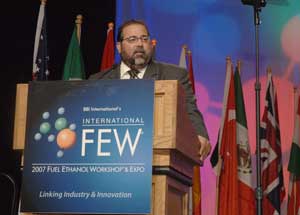
The Spirit of St. Louis
By Michael Shirek
Twenty-three years ago, three dozen ethanol industry pioneers met in St. Louis to trade ideas and discuss the future. In June, more than 5,000 joined the discussion at the 23rd annual International Fuel Ethanol Workshop & Expo in the city where it all began.
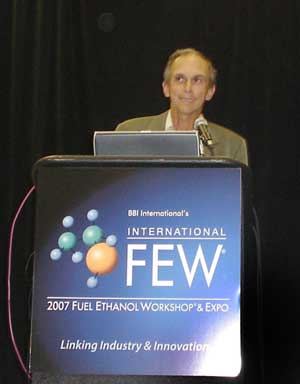
New and Improved
By Jessica Ebert
The seemingly unfaltering growth of the ethanol industry—characterized by the ramping up of plant capacities and the construction of new facilities—brings a corresponding increase in the need for energy and water. Speakers at this year's FEW made it clear that technologies are available to meet these challenges by improving process efficiency and reducing energy costs.
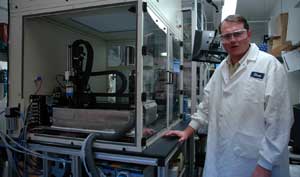
A Robotic Helping Hand
By Anduin Kirkbride McElroy
Cellulosic ethanol has a new, high-tech tool on its side in the form of a fully automated genetic engineering robot.
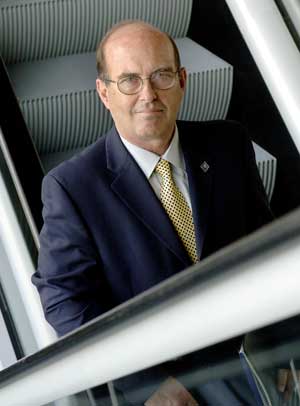
Prime Time for Alternative Energy Policy
By Dave Nilles
On the cusp of a renewable energy future, the American Council on Renewable Energy is attempting to reach every policy-maker in Washington, D.C. The end result could be a more energy diverse and efficient nation.
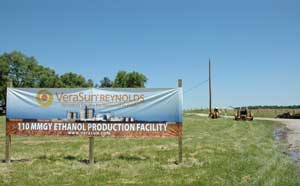
BioTown, USA: Hometown Security
By Anduin Kirkbride McElroy
Ethanol plants usually bring jobs and rural development to a community, but in Reynolds, Ind., local energy independence is the goal. Ethanol production will be just one part of a communitywide biomass utilization system better known as BioTown, USA.
Feeling the Heat: Firefighters Face Ethanol Boom
By Jerry W. Kram
The ethanol boom has led to many changes in towns and cities across the Midwest. More jobs and economic growth are welcome, but the billions of gallons of fuel being produced also mean a greater possibility for incidents at plants or while shipping ethanol to urban markets. Both emergency responders and the industry need to take steps to be prepared.
Maximizing Corn's Ethanol Yield
By Dave Nilles
Industry experts continue to develop innovative techniques for improving ethanol production. From field to fuel tank, the industry is devising new ways to analyze performance and improve yields.
Developing a Biofuels Rating System
By Susanne Retka Schill
Producing four-star biofuels may give producers a leg up when the United States develops a carbon cap-and-trade system. Methods to quantify greenhouse gas emissions and rate biofuels are being proposed and tested in an attempt to incorporate the multiple facets of cropping systems, conversion processes and industry and consumer needs.
Fuel School
By Bryan Sims
Judging by the crowd at the FEW's annual Ethanol 101 workshop, there are still plenty of people interested in producing ethanol.
Web Exclusive: To Market, to Market
By Craig A. Johnson
Transportation, whether it involves moving corn, distillers grains or ethanol, can be a daunting task for ethanol producers. At the FEW, several sessions focused on managing logistics through the comprehension of fundamentals in the rail and feedstock arenas.
The Weather Man
By Tom Bryan
At the 19th Annual Energy Conference, Iowa State University climatologist Elwynn Taylor shared his near-term forecast, along with his broader views on greenhouse gases, global warming and the very real possibility of a future chock-full of erratic weather.
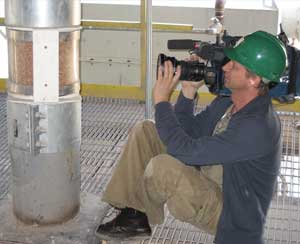
In the News
By Rona Johnson
White Energy Holding Co. LLC made the Holland evening news this spring after a television news crew toured its Russell, Kan., ethanol facility and interviewed company executives and plant staff. The purpose of the visit was to educate viewers in Holland about the renewable fuel and to give them a sense of the depth and breadth of the U.S. ethanol industry.

The Rumplestiltskin of Rice Straw
By Ron Kotrba
Given the engineering green light, Colusa Biomass Energy Corp. readies to break ground on its first commercial rice-straw refinery in California. Executives of the publicly traded startup tell Ethanol Producer Magazine of their incredible long-term vision and the steps needed to see it through.

At the Corner of Jackson & LaSalle
By Nicholas Zeman
After two years of offering services and products for ethanol, the Chicago Board of Trade is helping stabilize the industry and hosting producers as they conduct risk management operations, including long-term sales negotiations and grain procurement. EPM visited the commodities market to the world in May to observe the operation.
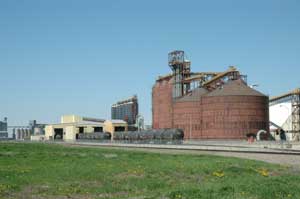
One Man's Trash Is Another's Power Source
By Nicholas Zeman
A nationwide movement to capitalize on the energy producing power of garbage is driven by a strong market for renewable energy, a desire to clean up the environment and to generate a revenue stream.

The Quest to Commercialize Biobased Succinic Acid
By Jessica Ebert
High-priced petroleum brings the finite nature of this resource to a striking reality. Out of necessity comes research into alternative fuels and the myriad of materials made from petroleum. Since the mid-1990s, succinic acid has garnered interest as a petroleum alternative for the manufacture of everything from de-icers to pesticides.

Harnessing the Power of Biomass
By Susanne Retka Schill
Biomass power producers aren't pausing while current U.S. federal policies favor renewable fuels development in an effort to reduce the nation's dependence on foreign oil. Renewable power will play a vital role in the world's attempts to reduce greenhouse gases. Now that the first-generation technology has matured, work continues on developing new technologies based on lessons learned.
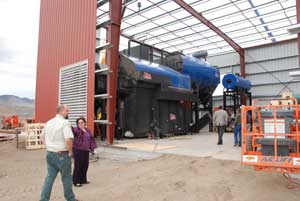
Fuels for Schools and Beyond
By Anduin Kirkbride McElroy
Fuels for Schools was started in Vermont as a statewide initiative to promote and encourage the use of renewable, local natural resources to provide reliable heat for schools. It has since grown into a multistate program, and has recently expanded its scope beyond schools.

The Elusive Biorefinery
By Jerry W. Kram
Replacing fossil fuel-based products such as plastics and solvents with biomass-based equivalents has long been a goal of the biobased industry. The vision is a biorefinery-the equivalent of an oil refinery-producing many chemicals with hundreds of end uses. So, why aren't such facilities being built?

Daring to Design the Vehicle of the Future
By Bryan Sims
The 2007 Challenge X: Crossover to Sustainable Mobility competition enables today's students to shape tomorrow's vehicles.
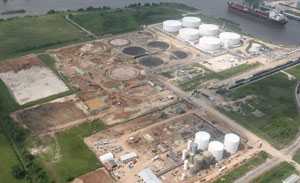
Within the Petroleum Distribution Network
By Anduin Kirkbride McElroy
A partnership between Kinder Morgan Energy Partners LP and Green Earth Fuels LLC literally places biodiesel production within the petroleum distribution network, right next to the pipelines. Kinder Morgan believes this would be effective in taking biodiesel out of its niche fuel status.
Current and Future Passenger Diesels
By Ron Kotrba
Automakers across the globe have been retooling their passenger diesel powertrains-tweaking fuel injection, timing and combustion specs while adding sophisticated advanced emissions control gear-to meet new U.S. and global regulations on particulate matter and nitrogen oxides.
Motor City Methyl Esters
By Nicholas Zeman
DaimlerChrysler Corp., NextEnergy Center and Biodiesel Industries Inc. are cleaning up a brownfield site in Detroit to grow feedstocks for biodiesel production. Developing future fuels in Michigan is critical as it's the U.S. automobile manufacturing hub. Furthermore, if the project is successful it could serve as a model for the "greening" of hazardous waste sites nationwide.
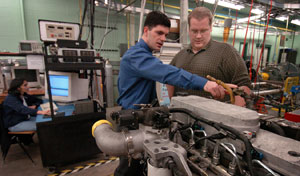
The Ideal Engine
By Jessica Ebert
An engine that produces near-zero emissions, gets great fuel economy and runs on fuels produced in the homeland is the dream of environmentalists, engineers and those who seen an energy-independent economy. Scientists across the globe are close to taking this concept from the realms of REM sleep and wishful thinking to plunking it into reality.
Contributions
Assessing the Benefits of Fan Repair and Replacement
By Thomas J. Kuli and Tim Rape
Assessing the Benefits of Fan Repair and Replacement
Reviewing the Capabilities of Ethanol Loading Systems
By Gary Schriever
Finding Opportunities for Carbon Dioxide Revenues
By Sam Rushing
Prospects for the Philippines' Fuel Ethanol Industry
By Ari Luis Halos, Marriz Manuel B. Agbon and Tamara
More Profits a Possibility with Corn Pre-Fractionation
By Barb Baylor Anderson
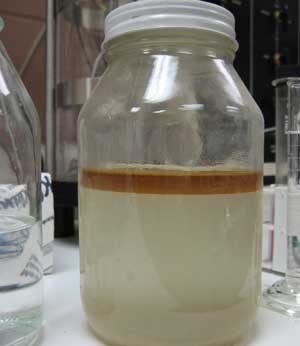
Items to Consider in SPCC and FRP Plans
By Brian Wanzenried














